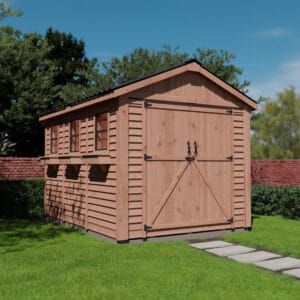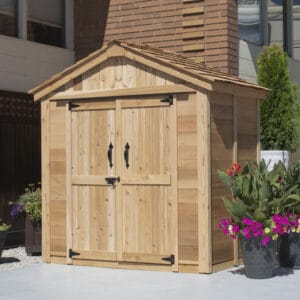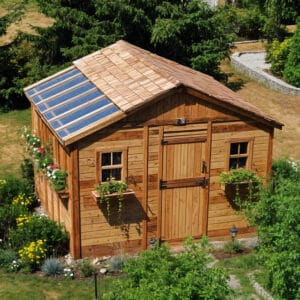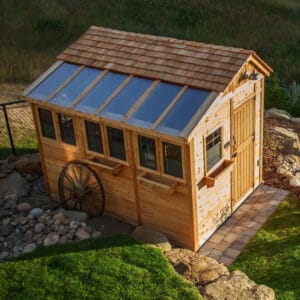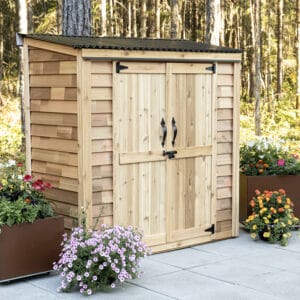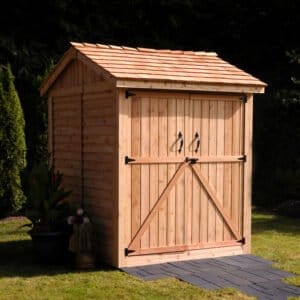No products in the cart.
April 6, 2017
Although you may have your own thoughts and preferences about what vegetables would be best to grow in your garden, our backyard garden ideas will help you get the best return for your effort.
You need to make sure that you have enough space in your backyard garden. If space is limited for a vegetable garden in your backyard, you should reconsider which crops are best and easy to grow. You should also know which seeds are expensive to buy. Here is a look at some of the best vegetables to plant in your backyard.
Peas: When spring comes, one of the first crops you should plant is peas. Also, it is one of the first you can harvest with a short season of about 60 days. For this crop, you need well-drained soil and large planters and raised garden beds as they do well in these. You should also have a medium-height trellis of about 3 to 4’ for the peas to climb.
You can sow them directly into the ground from seeds and make sure that you sow them thickly. But you can also sprout peas indoors, which helps in ensuring success when conditions are damp. You can extend the harvest by staggering the planting time every 2 weeks. Peas are a poignant choice as they benefit your soil’s health by fixing nitrogen.
Peas are also delicious with rice. Peas are healthy and scrumptious. There are not too many meals better than a meal with rice, peas and some beef, that is a fantastic and healthy meal.
Broccoli: A member of the Brassica family, broccoli is a highly valued vegetable due to its nutritional value as well as long productivity period. It is also quite expensive to buy. Over winter, broccoli can provide new shoots with smaller-sized clusters of the veggie which is marvelous to have during the cold season. You should sow broccoli into the ground directly from the seed, or you could also sow them in small starter pots, depending on the space you have.
Experts recommend starter pots as they make it easier to protect the seedlings from slugs and birds and you can move them indoors in harsh weather conditions until they become strong enough to be transplanted in the outdoors. You should put brassica crops on different beds every year, meaning you should rotate them each year.
With mayonnaise, broccoli is spectacular.
Lettuce: When it comes to lettuce, there are a number of varieties available. You can plant large, head-forming lettuces like butterhead and iceberg single file in rows, which is marvelous and makes mulching easy. On the other hand, you can plant smaller leafy varieties thickly in 24” wide swaths for a great self-mulching effect. You can also intersperse small lettuce transplants throughout the garden wherever you have space.
‘Bolting’ is a common problem when it comes to lettuce and it takes place when the plant goes to seed and the leaves cease to grow. Bolting occurs when temperatures are consistently too high. If you want to stop bolting from happening in your garden, make sure that you plant your lettuce in a shaded area or plant them next to other crops that can provide shade, such as tomatoes.
Your salads will be scrumptious with your own lettuce. On top of this, your burgers and ham sandwiches and so on will be outstanding with your own lettuce as well.
Tomatoes: Everyone loves tomatoes and there are quite a few varieties that you can choose from such as paste, table, and cherry tomatoes. You will need to provide tall stakes which you should set when you transplant the plant. You can also use small wire cages.
No matter which one you use, you will need to tie the plants gently to the stakes as they slowly grow. If you want your tomatoes to do well, you should keep their leaves dry. You can construct a simple shelter to cover the plants with clear plastic sheeting – you can leave the sides open. You can keep rain from wetting the lower leaves with a layer of mulch. This will also help the upper soil retain moisture.
That turkey sandwich never tasted so good with your own tomatoes making every bite that much more fresh and tantalizing.
Peppers: Peppers are easy to grow and commonly planted early in small pots. You can then transplant them when the weather becomes warm enough outside. If you see any small peppers forming on transplants, make sure that you pick them off or it will stunt the plant growth.
You should also pick the green peppers when they reach size – this will help in stimulating new fruiting and increasing each plant’s yield. Leave a plant or two unpicked if you want the peppers to become sweet and turn yellow or red in color – however, keep in mind that fewer peppers will be produced in such plants.
You can do so much with the pepper it is just incredible. The only limit really is your imagination.
If you want to grow vegetables that give you a hefty yield as a reward for your efforts, the five mentioned above are some of the best choices. Spring is just around the corner and it is time to start thinking about what will go into your backyard veggie garden.
There is nothing like knowing that you are eating the freshest produce that you have planted and grown yourself. With these plants, you can have a fantastic harvest and have the healthiest foods in your kitchen every day. Check out more vegetables that you can grow in your backyard and start planting ASAP!
April 6, 2017
-
 On SaleSale!%Off13Save $930930$13%930$On SaleSale!%Off7Save $445445$7%445$On SaleSale!%Off7Save $400400$7%400$On SaleSale!%Off13Save $930930$13%930$
On SaleSale!%Off13Save $930930$13%930$On SaleSale!%Off7Save $445445$7%445$On SaleSale!%Off7Save $400400$7%400$On SaleSale!%Off13Save $930930$13%930$ -
 On SaleSale!%Off8Save $195195$8%195$On SaleSale!%Off6Save $150150$6%150$On SaleSale!%Off8Save $195195$8%195$
On SaleSale!%Off8Save $195195$8%195$On SaleSale!%Off6Save $150150$6%150$On SaleSale!%Off8Save $195195$8%195$ -
 On SaleSale!%Off11Save $1,1541154$11%1154$On SaleSale!%Off10Save $906906$10%906$On SaleSale!%Off10Save $861861$10%861$On SaleSale!%Off11Save $1,1541154$11%1154$
On SaleSale!%Off11Save $1,1541154$11%1154$On SaleSale!%Off10Save $906906$10%906$On SaleSale!%Off10Save $861861$10%861$On SaleSale!%Off11Save $1,1541154$11%1154$ -
 On SaleSale!%Off4Save $270270$4%270$On SaleSale!%Off4Save $265265$4%265$On SaleSale!%Off10Save $775775$10%775$On SaleSale!%Off10Save $775775$10%775$
On SaleSale!%Off4Save $270270$4%270$On SaleSale!%Off4Save $265265$4%265$On SaleSale!%Off10Save $775775$10%775$On SaleSale!%Off10Save $775775$10%775$ -
 On SaleSale!%Off8Save $155155$8%155$On SaleSale!%Off10Save $190190$10%190$On SaleSale!%Off10Save $190190$10%190$
On SaleSale!%Off8Save $155155$8%155$On SaleSale!%Off10Save $190190$10%190$On SaleSale!%Off10Save $190190$10%190$ -
 On SaleSale!%Off13Save $540540$13%540$On SaleSale!%Off13Save $550550$13%550$On SaleSale!%Off12Save $445445$12%445$On SaleSale!%Off13Save $550550$13%550$
On SaleSale!%Off13Save $540540$13%540$On SaleSale!%Off13Save $550550$13%550$On SaleSale!%Off12Save $445445$12%445$On SaleSale!%Off13Save $550550$13%550$

